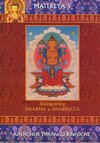Three songs by recognized masters of different Tibetan Buddhist traditions illustrate what their views have in common--with commentary by Thrangu Rinpoche and songs by Ju Mipham, Changkya Rolpay Dorje, and Chogyam Trungpa.
Do different Tibetan Buddhist traditions share an essential, common view?
The great Geluk scholar Changkya Rolpay Dorje (1717-1786) wrote a song describing the view of the middle way, comparing it to a mother. Later, the nonsectarian polymath Ju Mipham Rinpoche (1846-1912) and the influential Kagyu master Chogyam Trungpa Rinpoche (1939-1987) wrote songs modeled upon it that describe the views of dzogchen and mahamudra, one comparing dzogchen to a jewel and the other comparing mahamudra to a lover. Even though the imagery and the specific points each author makes are different, the songs share many characteristics in structure and content. Read together, the three songs show how the essential points of these three practices are the same and reveal how Buddhism's various traditions--including the pinnacles of the middle way, dzogchen, and mahamudra--are harmonious.
The three songs are presented with a commentary by Khenchen Thrangu Rinpoche, who explains how studying the profound view helps develop the certainty that is necessary to bring meditation practice to fruition. He shows how songs such as these can serve as antidotes to discouragement and provide help to people who have had strong meditation experiences but find themselves unable to sustain a high level of practice. Thrangu Rinpoche explains that, in comparison to oral instructions and treatises, songs of this kind are of special benefit because of their engaging eloquence. The songs are not long, and they are a delight to read, reread, and memorize. By clarifying the view again and again in this way, they offer continual inspiration to practitioners.
A Harmony of Views: Three Songs by Ju Mipham, Changkya Rolpay Dorje, and Chogyam Trungpa; Thrangu Rinpoche; Snow Lion Publications; Paperback; 240 pp; $21.95
KHENCHEN THRANGU was born in Tibet in 1933. At the age of five, he was formally recognized by His Holiness the Sixteenth Karmapa and Tai Situpa as the ninth incarnation of the great Thrangu tulku. At twenty-seven, Thrangu Rinpoche was forced to flee to India. He was called to Rumtek monastery in Sikkim, where he was given the task of preserving the teachings of the Kagyu lineage. He was appointed by H.H. the Dalai Lama to be the personal tutor for the Seventeenth Karmapa and the four principal Karma Kagyu tulkus. Thrangu Rinpoche established the fundamental curriculum of the Karma Kagyu lineage taught at Rumtek and founded numerous monasteries and nunneries, schools for Tibetan children, and medical clinics. He has taught extensively throughout the world and is the abbot of Gampo Abbey.
|
CONTENTS: A Harmony of Views
|
|
Translators' Introduction
|
vii
|
|
Prologue
|
1
|
|
|
|
Part One: The View of Dzogchen
|
|
1.
|
Experiential Song of the Dzogchen View Called "The Music of Sweet Sounds"
by Ju Mipham
|
9
|
|
2.
|
The Preliminaries: Destroying the Hut of Mind
|
15
|
|
3.
|
The Actual Practice: Seeing Self-Arisen Awareness Directly
|
25
|
|
4.
|
How the View of Dzogchen Fits with Other Paths
|
39
|
|
5.
|
The Sun of Mental Ease Shining from Within
|
59
|
|
|
|
Part Two: The View of the Middle Way
|
|
6.
|
Song of the View Called "Recognizing My Mother"
by Changkya Rolpay Dorje
|
75
|
|
7.
|
Searching for Emptiness Analytically
|
79
|
|
8.
|
Seeing Emptiness Directly
|
89
|
|
9.
|
How the Middle Way Fits with Other Paths
|
105
|
|
10.
|
The Mental Ease of Seeing Emptiness
|
125
|
|
|
|
Part Three: The View of Mahamudra
|
|
11.
|
Experiential Song of the View of Luminous Mahamudra Called "The Music of Great Bliss"
by Chogyam Trungpa Rinpoche
|
139
|
|
12.
|
Establishing the Basis through the View
|
145
|
|
13.
|
Practicing the Path of Meditation
|
157
|
|
14.
|
How the View of Mahamudra Fits with Other Paths
|
167
|
|
15.
|
The Sun of Mental Ease Shining from Within
|
177
|
|
|
|
Appendix A: An Outline of the
Experiential Song of the Dzogchen View Called "The Music of Sweet Sounds"
|
185
|
|
Appendix B: An Outline of the
Song of the View Called "Recognizing My Mother"
|
193
|
|
Appendix C: An Outline of the
Experiential Song of the View of Luminous Mahamudra Called "The Music of Great Bliss"
|
199
|
|
Glossary
|
207
|
|
Notes
|
211
|
|
Index
|
213
|
|



